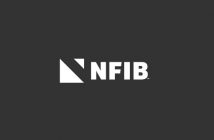(Photo | Pexels)
You cannot keep retirement funds in your accounts indefinitely. You generally must start taking required minimum distributions (RMDs) from your traditional IRA, 401(k), 403(b), 457(b) or other employer-defined contribution retirement plan account when you reach age 73. (If you haven’t already begun distributions at age 72 in 2022) Congress recently raised the age to 73, offering relief to many investors from taking distributions while the market is down.
The Calculation
An RMD for any year is the account balance as of the end of the preceding calendar year divided by a distribution period from the IRS’s “Uniform Lifetime Table.” A separate table is used if the sole beneficiary is the owner’s spouse who is ten or more years younger than the owner. To access an IRS RMD worksheet that contains the Uniform Lifetime Table, go to irs.gov/pub/irs-tege/uniform_rmd_wksht.pdf.
Reaching Age 73
The beginning date for first RMDs from IRAs (including SEP and SIMPLE IRAs) is January 1 of the year in which you reach age 73. For 401(k), 403(b), 457(b), or other defined contribution plans, the first RMD date is generally January 1 of the year following the year you reach age 73 or retire. The terms of your employer’s plan may allow you to wait until the January 1 of the year you actually retire to take your first RMD (unless you are a five percent or more owner).
More About RMDs
Inherited IRAs — Generally, non-spousal beneficiaries must begin taking RMDs from their Inherited IRAs by December 31 of the year after the year of the original owner’s death and distribute the entire fund within ten years.
Spousal beneficiaries — If the spouse rolls over the deceased’s assets to his/her own IRA, RMDs can begin at age 73 as long as the spouse attained age 72 in 2020 or later. If assets are rolled over to an inherited IRA, RMDs must begin when the deceased would have reached age 72.
Roth IRAs — No RMDs for original account owner. Inherited Roth IRAs generally require RMDs that are tax-free as long as the assets have been in the account for five or more years.
Taxation — Non-Roth RMDs subjected to ordinary income taxes.
Charitable giving — You may be able to avoid RMDs included in your taxable income by making a qualified charitable distribution (QCD).
Failure to take a RMD — If you do not take any RMD, or if a distribution is less than the calculated requirement, you may have to pay a 50 percent excise tax on the amount not distributed as required.
Provided by Ed Wettig, CFP, Cornerstone Financial Planning Group, which offers investment management, financial planning and retirement income strategies. Representative is registered with and offers only securities and advisory services through PlanMember Securities Corporation, a registered broker/dealer, investment advisor and member FINRA/SIPC. 6187 Carpinteria Ave, Carpinteria, CA 93013, 800-874-6910. Cornerstone Financial Planning Group and PlanMember Securities Corporation are independently owned and operated. PlanMember is not responsible or liable for ancillary products or services offered by Cornerstone Financial Planning Group or this representative.





